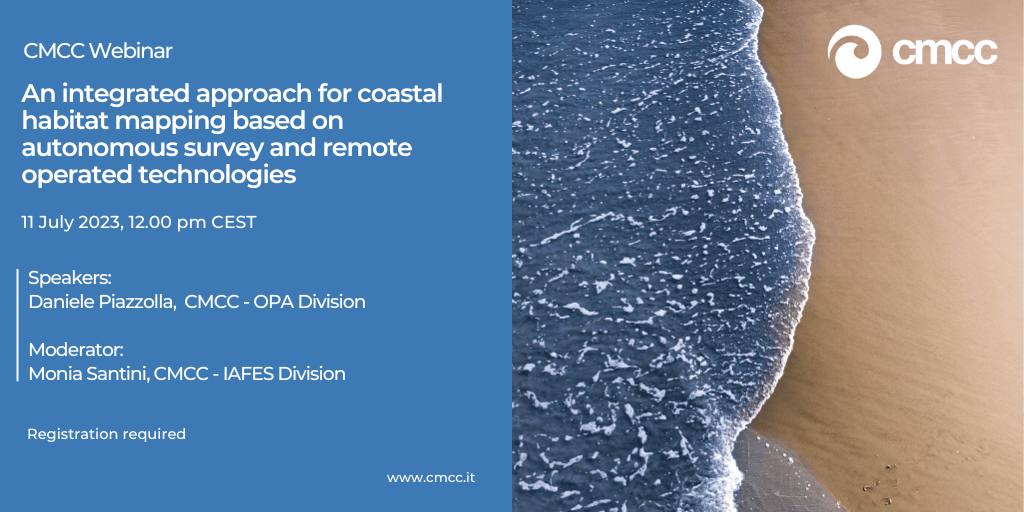CMCC Webinar
11 July 2023, 12.00 pm CEST
To join the webinar, register here

Speaker
Daniele Piazzolla, CMCC – OPA Division
Moderator
Monia Santini, CMCC – IAFES Division
Abstract
Climate change and human activities threaten the health of the world’s oceans (Micheli et al., 2013; Dimas et al., 2022). These issues led to increased global attention to the conservation and restoration of marine ecosystems in recent decades (Ridge and Johnston, 2020) since they can cause loss of biodiversity, alteration of communities’ structure, and loss of their functionality (Doney et al., 2012).
Among marine ecosystems around the world, those on the coasts of the Mediterranean Sea, which are historically important sites for the development of multiple human activities (Dimas et al., 2022), are particularly threatened.
Seagrasses are important and productive coastal systems that provide nursery areas, carbon sequestration, protection from erosion, bioremediation, and oxygen production. Accurate information about the spatial distribution of coastal habitats such as seagrass meadows is essential towards effectively managing anthropogenic pressures and ensuring the conservation of environmental resources (Monteiro et al., 2021). In this perspective, the use of innovative methodologies and technologies able to facilitate the monitoring activities of the coastal marine environment is particularly helpful. New cost-effective devices and autonomous survey technologies contribute to the optimization of the cost-benefit ratio of field surveys, to the limitation of the impacts of the survey activities themselves on the habitats, and to favour the acquisition of more real-time data.
Here we report the results of the seafloor and habitats mapping along the coast of Civitavecchia (Northern Latium, Italy) using an integrated approach which involves the use of Unmanned Surface Vehicle (USV) and Remote Operated Vehicle (ROV) technologies, supported by in situ diving surveys, GIS elaborations, and existing information, aiming to demonstrate its effectiveness for local scale investigations and to reach a greater information detail useful for ecosystem management and conservation actions.
The habitat knowledge at small-scale in the selected area is particularly important due to the presence of industrial activities such as the Port of Civitavecchia, a tourist and commercial hub which is subject to structural expansion works, potentially impacting coastal ecosystems.
This work was performed as part of the RENOVATE project, financed by the Port System Authority of the Northern-Central Tyrrhenian Sea.
WATCH THE VIDEO
HOW TO PARTICIPATE
11 July 2023, 12.00 pm CEST
To join the webinar, register here
ORGANIZED BY:
CMCC

